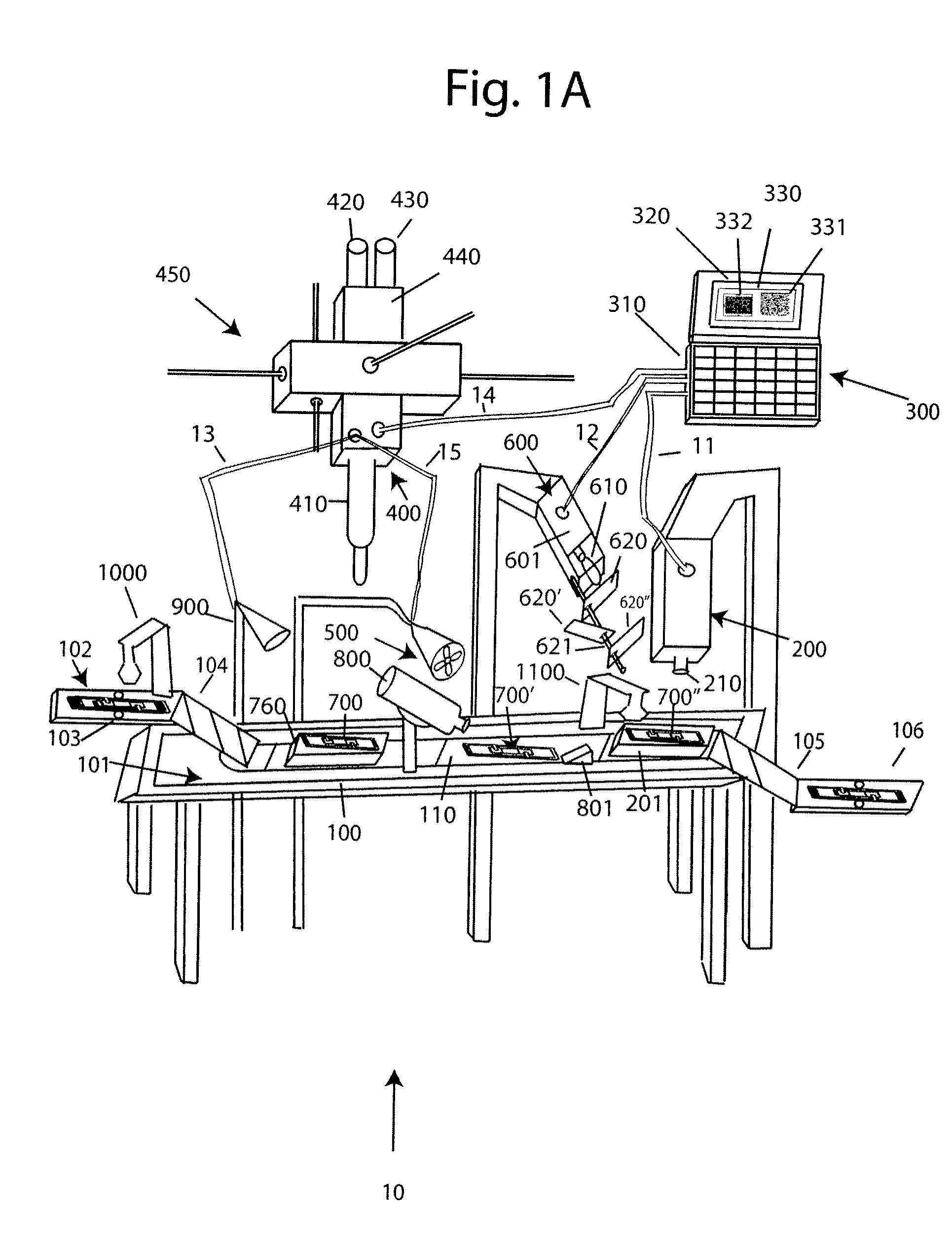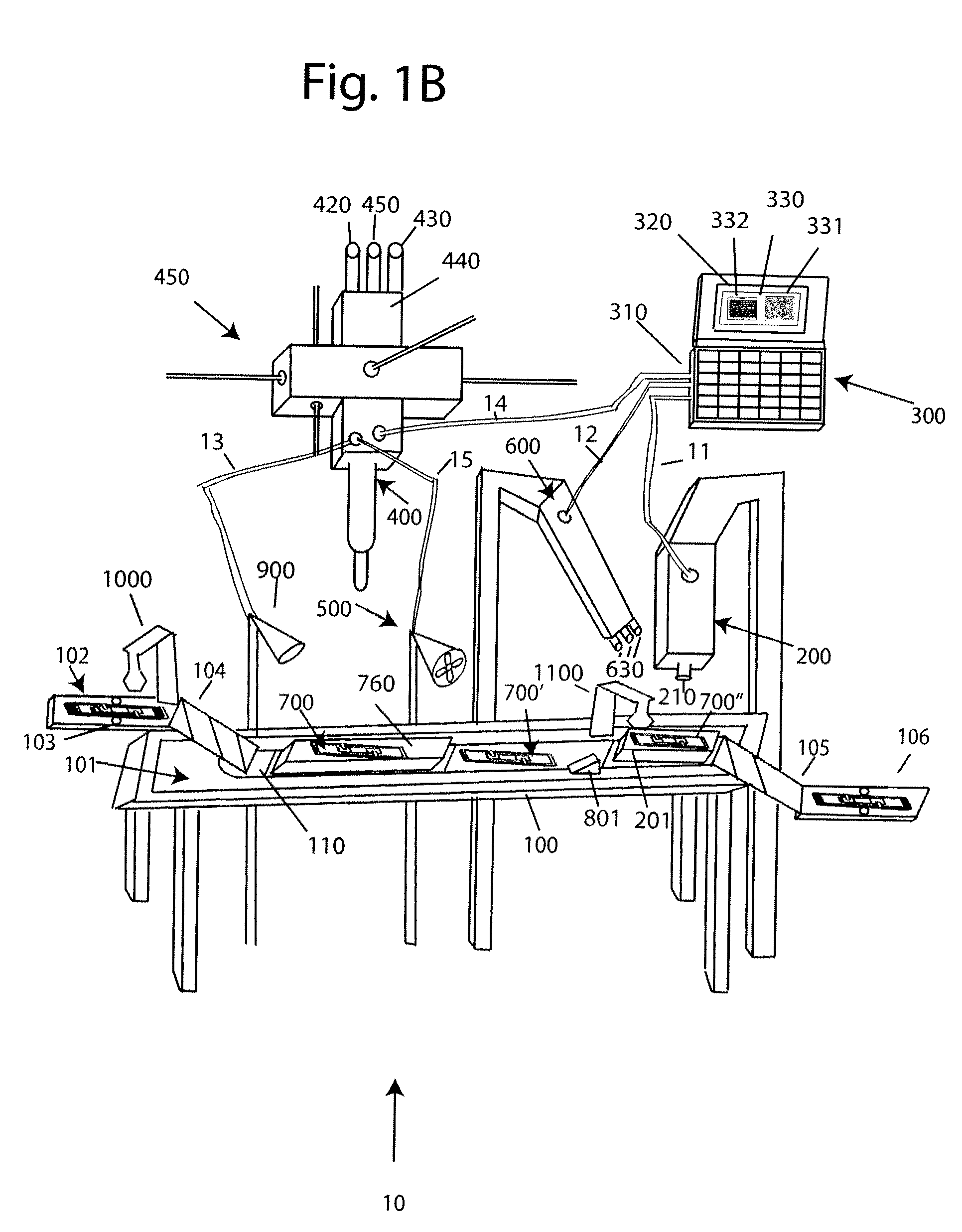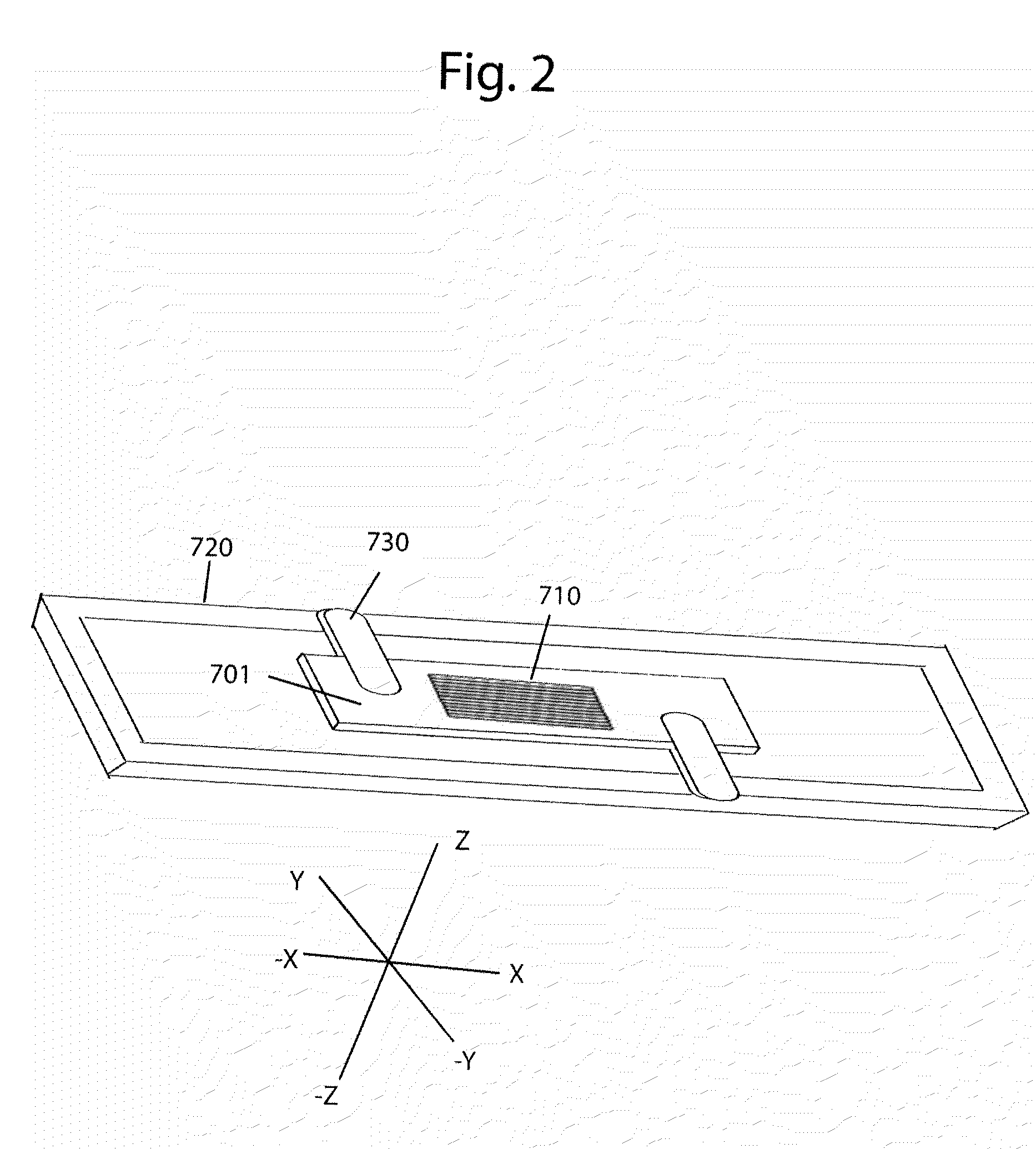Method of determining a complete blood count and a white blood cell differential count
a technology of white blood cell differential and complete blood count, which is applied in the field of determining a complete blood count and a white blood cell differential count, can solve the problems of large proportion of blood specimens that require further testing, large calibration and control requirements of cbc instruments, and substantial costs associated with acquisition, service, reagents, consumables and disposables, etc., to improve the accuracy of cbc, improve the visualization of formed elements, and reduce the cost of acquisition.
- Summary
- Abstract
- Description
- Claims
- Application Information
AI Technical Summary
Benefits of technology
Problems solved by technology
Method used
Image
Examples
Embodiment Construction
[0020]With reference to FIG. 1A, a system 10 for analyzing body fluids is disclosed. The system may comprise a platform 100, a light receiving device 200, a computer 300, an applicator 400, a gas circulation device 500, a light source 600, a dispenser 800, a discharge device 900, a slide labeler 1000, and slide label reader 1100. The following sections below include capitalized headings which are intended to facilitate navigation through the specification. The headings are not intended to be limiting of the invention in any manner.
The Platform 100
[0021]In embodiments which feature a platform 100, an advancer 110 may be configured to receive one or more slide apparatuses 700-700″. The advancer 110 may be attached to a surface, such as the top surface 101, of the platform. The advancer 110 may take the form of a belt as shown in FIG. 1A, the system may use a mechanical arm, gravity, magnetism, hydraulics, gears, or other locomotion techniques to move the slide apparatus along the surf...
PUM
 Login to View More
Login to View More Abstract
Description
Claims
Application Information
 Login to View More
Login to View More - R&D
- Intellectual Property
- Life Sciences
- Materials
- Tech Scout
- Unparalleled Data Quality
- Higher Quality Content
- 60% Fewer Hallucinations
Browse by: Latest US Patents, China's latest patents, Technical Efficacy Thesaurus, Application Domain, Technology Topic, Popular Technical Reports.
© 2025 PatSnap. All rights reserved.Legal|Privacy policy|Modern Slavery Act Transparency Statement|Sitemap|About US| Contact US: help@patsnap.com



